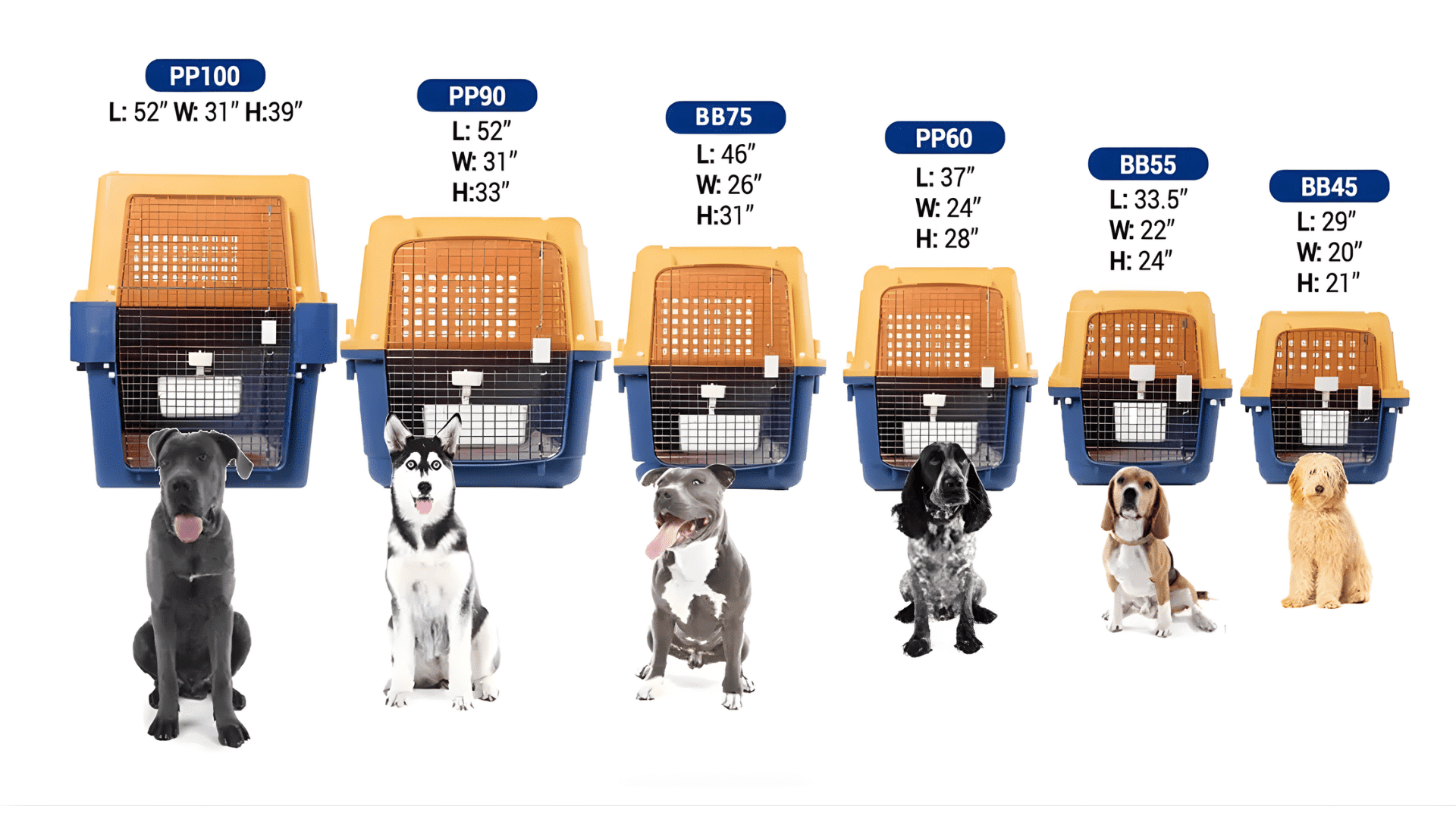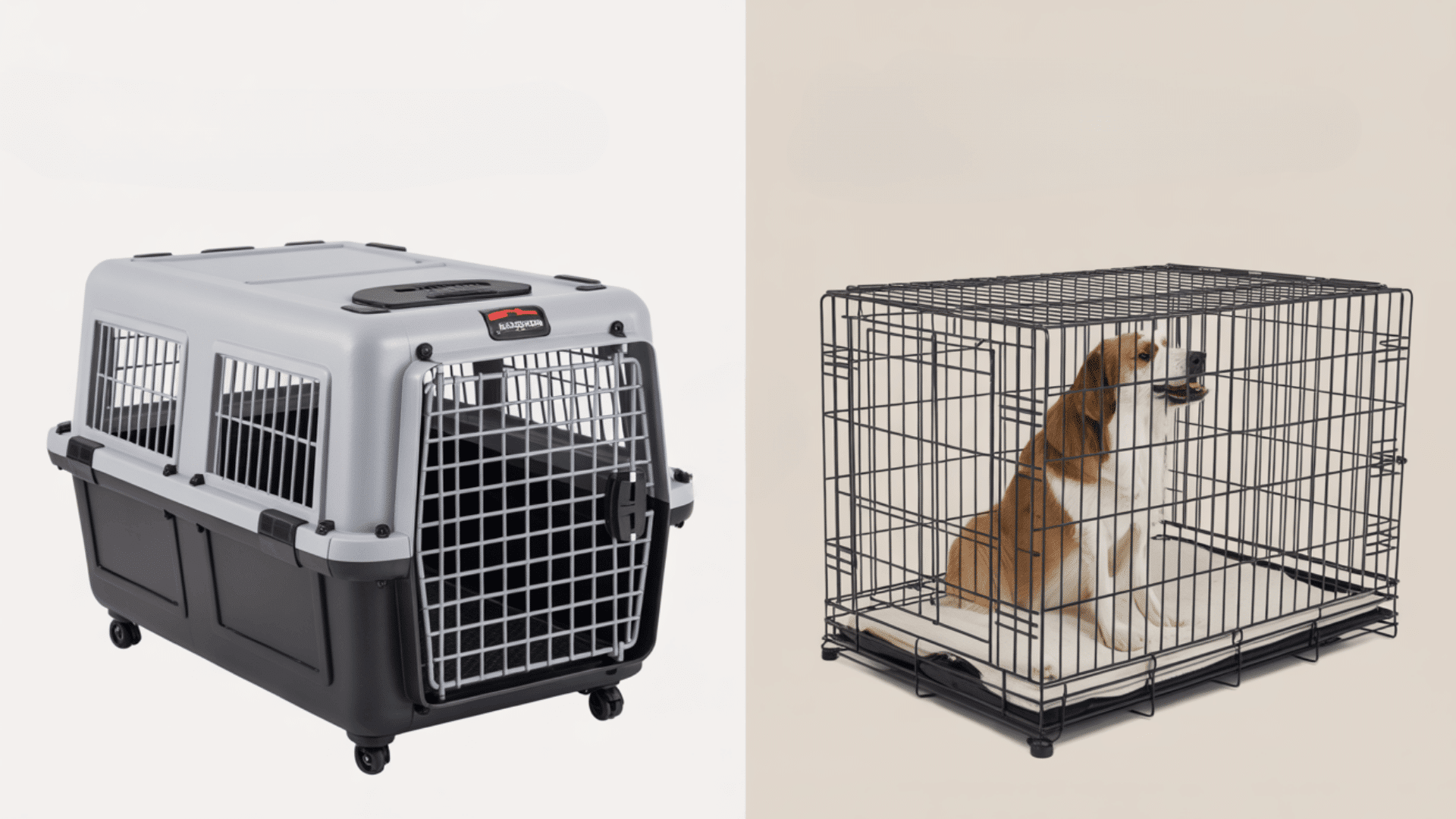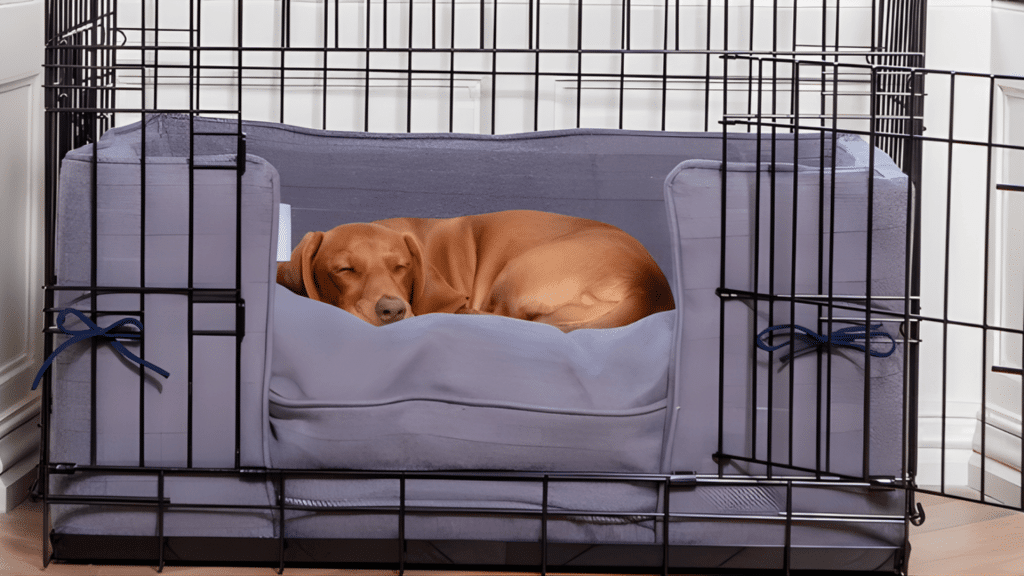Choosing the right crate for your dog is more important than you might think. A crate isn’t just a box-it’s a safe place where your dog can sleep, rest, and feel secure.
Picking the wrong size can make your dog feel cramped, stressed, or even cause accidents, while the right size keeps them comfy and happy.
It’s also important to think about growth, especially for puppies, so they have enough room as they get bigger.
In this article, you’ll learn how to measure your dog, pick the right crate size for different breeds, and understand the benefits of adjustable or multi-size crates.
We’ll also cover tips for making your dog’s crate cozy with bedding, toys, and dividers. By the end, you’ll know how to choose a crate that keeps your dog safe, comfortable, and happy every day.
Why Choosing the Right Dog Crate Size Matters
Choosing the right size dog crate is very important. Your dog needs enough space to stand up, turn around, and lie down comfortably.
A crate that is too small can make your dog feel cramped and stressed. If the crate is too big, your dog may use one end as a bathroom, which can hinder crate training.
The right crate helps keep your dog safe and healthy. It also makes training easier because your dog sees the crate as a safe, cozy place.
Using the wrong size can cause behavior problems like chewing, barking, or accidents. Picking the right crate size shows you care about your dog’s comfort and happiness.
Factors to Consider When Selecting a Dog Crate
Choosing the right dog crate is more than just picking a box. The best crate fits your dog’s size, age, and daily needs. Here are the key factors to consider:
- Dog Breed and Size: Small, medium, large, and giant breeds all need different crate dimensions to stay comfortable.
- Age and Growth: Puppies grow fast. Adjustable or expandable crates help them have space now and in the future.
- Sleeping and Stretching Needs: Dogs should be able to stand, turn around, and lie down without feeling cramped.
- Crate Material and Type: Wire, plastic, and soft-sided crates have pros and cons depending on your dog’s size and behavior.
By considering these factors, you can choose a crate that keeps your dog safe, comfortable, and happy.
How to Measure Your Dog for the Perfect Crate

Different dog breeds need different crate sizes to stay comfortable and safe. Choosing the right crate helps with training, sleep, and overall well-being.
Here’s a guide by breed:
| Breed Size | Examples | Recommended Crate Dimensions |
|---|---|---|
| Small | Chihuahua, Pomeranian, Yorkie | 18–24” L × 12–18” W × 14–18” H |
| Medium | Beagle, Cocker Spaniel, French Bulldog | 30–36” L × 20–24” W × 21–24” H |
| Large | Labrador Retriever, Golden Retriever, Boxer | 42–48” L × 28–32” W × 30–33” H |
| Giant | Great Dane, Mastiff, Saint Bernard | 54–60” L × 36–42” W × 38–45” H |
Choosing the right crate size ensures your dog has space to stand, turn, and lie down comfortably, helping them feel secure and happy.
Adjustable and Multi-Size Crates
Adjustable and multi-size crates are great for growing puppies. These crates can change in size, giving your dog more space as they grow. This means you don’t have to buy a new crate every few months.
When choosing an adjustable crate, make sure it has easy-to-move panels or dividers. Your puppy should always have enough room to stand, turn around, and lie down comfortably. Check the weight limit and material to match your dog’s size and strength.
Some popular options include wire crates with dividers, foldable plastic crates, and expandable soft-sided crates. Adjustable crates help your dog feel safe and comfy while saving you money and time in the long run.
Common Mistakes When Choosing a Crate Size
Picking the wrong crate size can cause problems for your dog. It’s important to avoid common mistakes to keep your dog safe and comfortable.
- Choosing too small or too large: A crate that is too small makes your dog feel cramped, while one that is too large may lead to accidents.
- Not accounting for growth or breed-specific needs: Puppies grow fast, and different breeds need different spaces. Ignoring this can quickly make the crate useless.
- Ignoring sleeping or stretching requirements: Dogs need room to stand, turn, and lie down comfortably. Skipping this can hurt their comfort and well-being.
By avoiding these mistakes, you can pick a crate that keeps your dog happy, safe, and healthy.
Crate Accessories to Improve Comfort
Adding the right accessories can make your dog’s crate more comfortable and enjoyable. Soft bedding or mats give your dog a cozy place to sleep and rest, keeping the crate warm and inviting.
Toys and safe chewables help keep your dog busy and happy, especially when you are not around. For growing puppies, dividers are very helpful.
They let your dog use only part of the crate at first, and as your puppy grows, you can move the divider to give more space.
Using these accessories makes the crate a safe, fun, and relaxing space where your dog can feel calm and comfortable every day.
Travel Crates vs. Home Crates

Choosing the right crate depends on whether it will be used at home or for travel. Travel crates and home crates have different features to keep your dog safe and comfortable.
| Crate Type | Purpose | Key Features | Size & Safety Notes |
|---|---|---|---|
| Home Crate | Daily use, training, comfort | Soft or hard materials, adjustable dividers, cozy bedding | Size based on the dog’s comfort; no strict regulations |
| Travel Crate | Car rides, plane trips | Sturdy, airline-approved, secure locks, ventilation | Must meet airline size and safety rules; crate should fit the dog with space to stand and turn |
Choosing the right crate type ensures your dog stays safe, comfortable, and stress-free whether at home or on the go.
How Crate Size Affects Behavior and Training
The size of a dog crate can affect your dog’s behavior and training. A crate that is too small can make your dog feel cramped, stressed, or even anxious.
On the other hand, a crate that is too big may lead to accidents because your dog might use one corner as a bathroom.
The right crate size helps with potty training by giving your dog just enough space to lie down comfortably without having extra room to go to the bathroom inside.
Proper crate sizing also helps reduce anxiety because your dog feels safe and secure. Picking the correct crate size makes training easier and keeps your dog happy and calm every day.
Common Mistakes When Choosing a Crate Size
Picking the wrong crate size can cause problems for your dog. Many owners make simple mistakes that can affect comfort, safety, and training.
- Choosing a crate that is too small or too large can be problematic: a crate that is too small makes your dog feel cramped, while one that is too large may encourage accidents.
- Not accounting for growth or breed-specific needs: Puppies grow fast, and different breeds need different spaces. Ignoring this can quickly make the crate useless.
- Ignoring sleeping or stretching requirements: Dogs need room to stand, turn around, and lie down comfortably. Skipping this can hurt their comfort and well-being.
Avoiding these mistakes helps your dog stay safe, happy, and comfortable in their crate.
Conclusion
Choosing the right crate for your dog is really important.
Different breeds and sizes need different amounts of space, so considering your dog’s breed helps ensure they are comfy and safe.
Measuring your dog carefully before buying a crate is a big help. You want them to have enough room to stand, turn around, and lie down without feeling cramped.
Puppies need a little extra space to grow, so adjustable or bigger crates are a smart choice. Adding soft bedding, toys, and dividers can make the crate a happy, cozy place for your dog.
Picking the right crate now can save you trouble later and help your dog feel secure every day. A good crate isn’t just a box-it’s a safe, comfy home your dog can enjoy for a long time.








